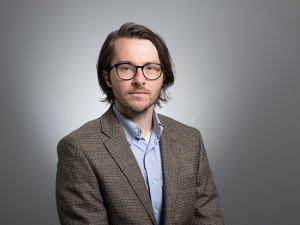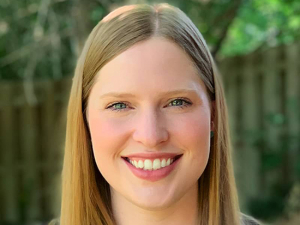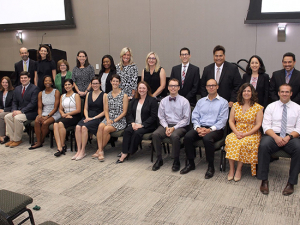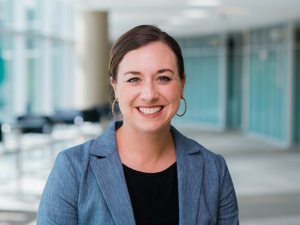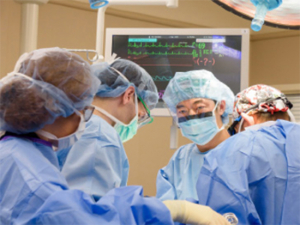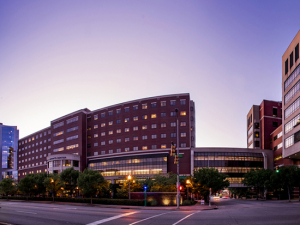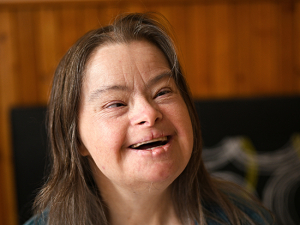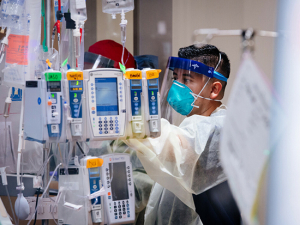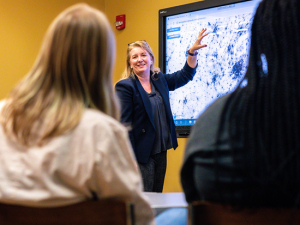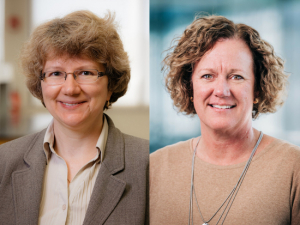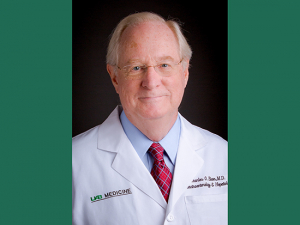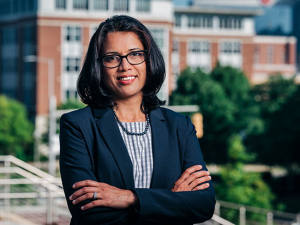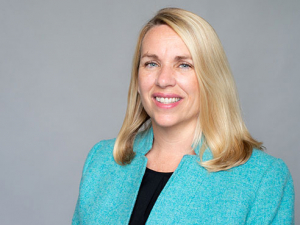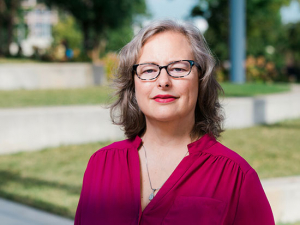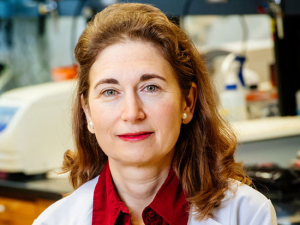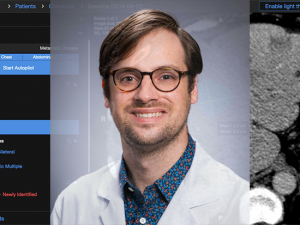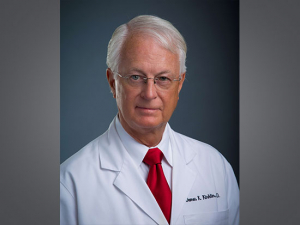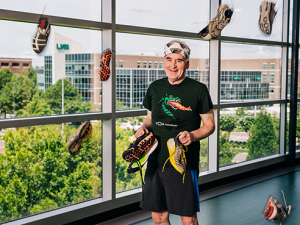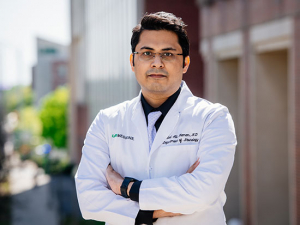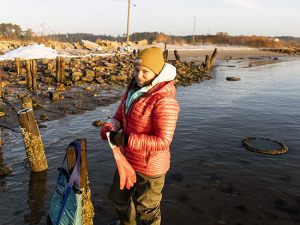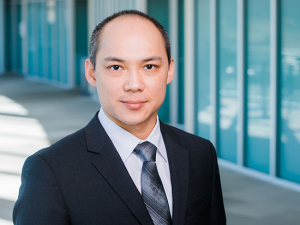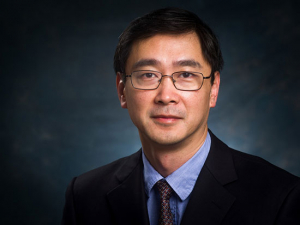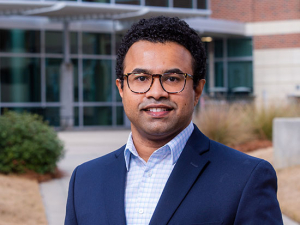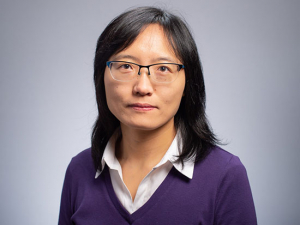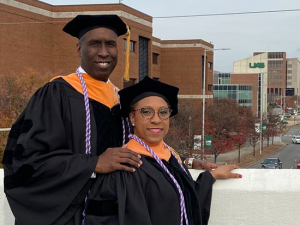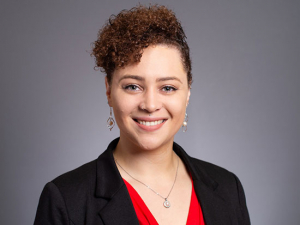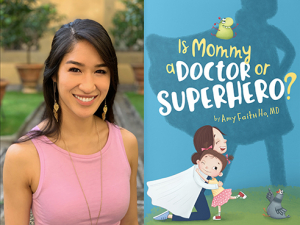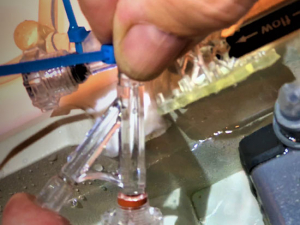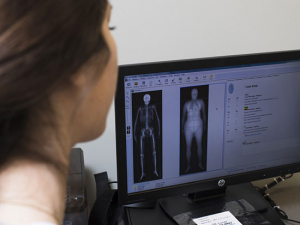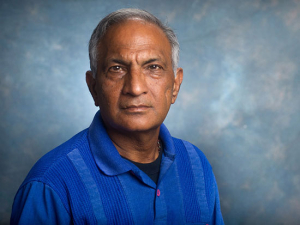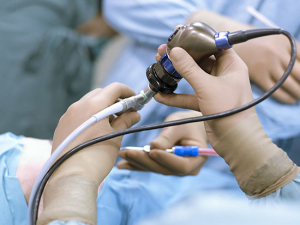The human body’s hyper-efficient metal-based enzymes are implicated in potent new anti-cancer therapies. Synthetic catalysts that mimic these molecules could lead to superior alternative-energy breakthroughs. Before this can happen, however, researchers must have a better understanding of how these metalloenzymes function.
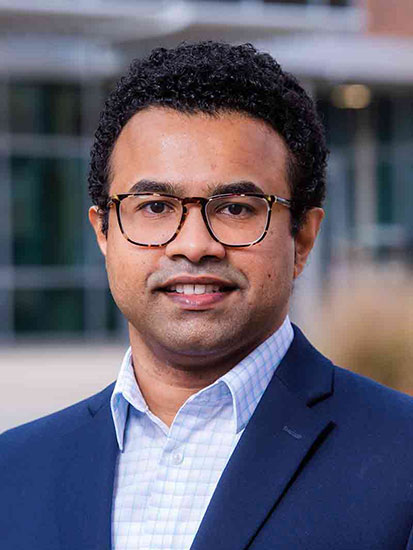 New anti-cancer agents and more-efficient fuel cells could result from a better understanding of the body's metalloenzymes, such as heme enzymes. With a new CAREER award from the National Science Foundation, Gayan Wijeratne, Ph.D., will pursue deeper understanding of the mechanisms behind heme enzymes.With a five-year, $710,000 grant from the National Science Foundation’s 2021 Faculty Early Career Development Program (CAREER), Gayan Wijeratne, Ph.D., assistant professor in the Department of Chemistry, intends to shed new light on the mechanisms by which heme enzymes catalyze oxidation and oxygenation reactions. These reactions are critical to normal function and play a role in disease progression and aging, but the underlying mechanisms are poorly understood. In his lab, Wijeratne uses synthetic analogs with similar structures to naturally occurring heme enzymes as mechanistic probes. The CAREER grant will enable him and his team to generate a library of synthetic heme model systems with a range of different properties in order to identify the optimal structural signatures that best match biological heme enzymes and identify new ways to design targeted therapeutic agents for numerous pathogenic conditions, including cancer.
New anti-cancer agents and more-efficient fuel cells could result from a better understanding of the body's metalloenzymes, such as heme enzymes. With a new CAREER award from the National Science Foundation, Gayan Wijeratne, Ph.D., will pursue deeper understanding of the mechanisms behind heme enzymes.With a five-year, $710,000 grant from the National Science Foundation’s 2021 Faculty Early Career Development Program (CAREER), Gayan Wijeratne, Ph.D., assistant professor in the Department of Chemistry, intends to shed new light on the mechanisms by which heme enzymes catalyze oxidation and oxygenation reactions. These reactions are critical to normal function and play a role in disease progression and aging, but the underlying mechanisms are poorly understood. In his lab, Wijeratne uses synthetic analogs with similar structures to naturally occurring heme enzymes as mechanistic probes. The CAREER grant will enable him and his team to generate a library of synthetic heme model systems with a range of different properties in order to identify the optimal structural signatures that best match biological heme enzymes and identify new ways to design targeted therapeutic agents for numerous pathogenic conditions, including cancer.
Wijeratne’s CAREER grant also will fund collaborations with science teachers in Birmingham City Schools to help local high school students prepare for the Central Alabama Regional Science and Engineering Fair. This will increase their scientific literacy and potentially pave the way to college scholarships, he explains.
CAREER grants support early-career faculty with the potential to be academic role models in both research and education within the context of the mission of their organizations. Wijeratne’s grant was supported by the NSF’s Chemistry of Life Processes Program. “It was my dream to win the NSF CAREER award one day, especially since the day my Ph.D. adviser won it in 2011,” Wijeratne said. “This is my very first grant proposal, so it is an extreme honor to have this funded. Words cannot express how truly grateful I am to my mentors, my awesome research group and UAB for always trusting in me and my research ideas.”
We asked Wijeratne to explain his project and its impact on science and students.
What makes this research unique in the field?
“Heme enzymes are extremely important metalloenzymes for humans and other organisms, and we use small-molecule synthetic mimics to elucidate their mechanisms. Mid-valent intermediates of heme enzymes (i.e., those containing Fe(III)) have been historically overlooked, and their structure-function relationships and substrate oxidation reactivities are only weakly understood. Our work will shed light on these unknowns, which will allow us to understand those enzymatic pathways that have powerful therapeutic potential with better clarity. Further, our findings will allow the discovery of novel greener methods for alternative energy applications.”
Free training offered for faculty preparing an NSF CAREER awardJunior faculty from across campus planning to apply for an award can learn from awardees Ragib Hasan, Ph.D., and Amber Genau, Ph.D., along with other current and previous awardees. Two sessions will be held online April 23 and 30. The second sessions builds off the first, so attendance at both sessions is recommended. RSVP by April 16 to Veronica Speight at vspeight@uab.edu. |
How could this research contribute to alternative energy applications?
“Fuel cells are one of the most promising alternative energy applications out there. Oxygen-reduction catalysts are an integral part of fuel cells, and researchers are in constant need of greener, cheaper oxygen reduction catalysts. Our work on bio-inspired oxygen reduction catalytic pathways is teaching us new lessons on applying biological knowledge for industrial applications such as fuel cells. That way, toxic precious metal catalysts that are currently being used may be replaced by environmentally benign, inexpensive metallocatalysts inspired by biology.”
What are some other long-term applications for this work?
“We hope to discover new knowledge into some of the most understudied metalloenzyme-mediated biological pathways, especially those that involve heme iron centers, which have emerged as significant human therapeutic targets in the recent years. Our work will help researchers understand those mechanisms of action in great detail, opening new doors into rational design of targeted, highly effective therapeutics. This is beneficial in a lot of situations, especially in designing novel anticancer agents with targeted activity, which would be highly desirable compared to current anticancer drugs. Our work will also reveal simpler synthetic protocols for important pharmacophores as we learn more about the biological systems that naturally generate similar molecules.”
Could you explain the Science Club program and why it is important to engage Birmingham City Schools students in the Central Alabama Regional Science and Engineering Fair?
“The Birmingham City school district is one of the most income-segregated school districts in the country, and the level of scientific literacy among Birmingham City school students is significantly lower compared to neighboring school districts. Our Science Club program, together with the UAB Center for Community Outreach Development, will offer a strategic preparatory phase for Birmingham City high school students for the Regional Science Fair, which can pave ways to scholarships for college-level science education. Specifically, we will work with high school teachers to construct high-quality student research projects over a period of about nine months for successful representation in the Regional Science Fair. We expect that this will lead to bigger and better opportunities for those students.”
How do high schoolers and undergraduates benefit from taking part in research?
“The new Science Club program will offer research opportunities for high school students at UAB, as well as other neighboring universities, which will give them a rare opportunity to test the waters of scientific research quite early on in their careers. High school students who have performed research at UAB have a long history of maturing into outstanding undergraduates and graduate students in the years that followed. Undergraduate researchers are an integral part of research efforts carried out in UAB’s chemistry department even at present, and we have a good number of UAB undergraduate researchers who return to UAB for graduate school. I think their fresh viewpoints can often be quite refreshing and intuitive, which is very important for scientific research when you try to tackle a problem in all possible directions.”
What equipment will you be using in this research?
“Our lab is capable of air-free, low-temperature experimentation, and we routinely utilize Schlenk techniques, gloveboxes, solvent purification systems and UV-visible spectrophotometers coupled to custom-made cryostats. We will also use UAB’s High-Field NMR [Nuclear Magnetic Resonance] facility as well as NMRs and XRD [X-ray diffraction] equipment in the Department of Chemistry that have low-temperature capabilities. We occasionally utilize the EPR spectrometer managed by Prof. Mary Zvanut’s group in the Department of Physics and the UAB Targeted Metabolomics and Proteomics Laboratory for mass spectrometric analyses. Our specialized collaborators outside UAB help us with resonance Raman and DFT characterizations. We also intend to collaborate with Prof. Wenli Bi in the Department of Physics on Mössbauer spectroscopy in future.”
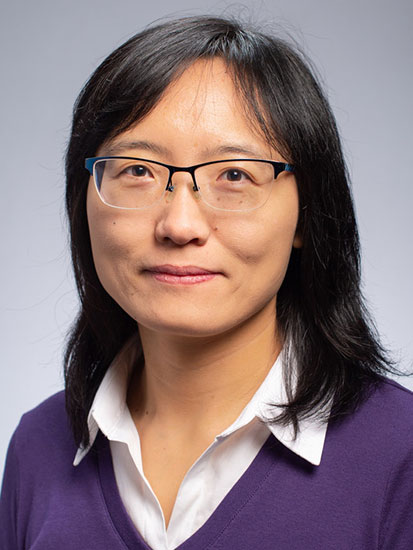 Related story
Related story
